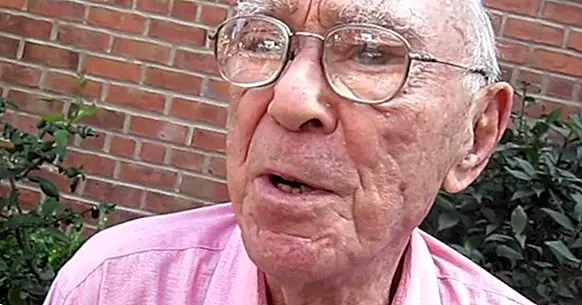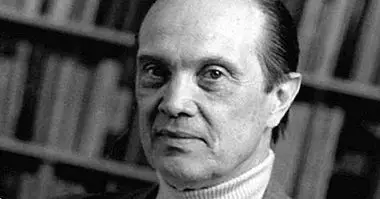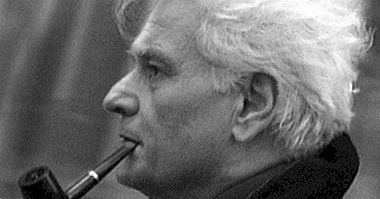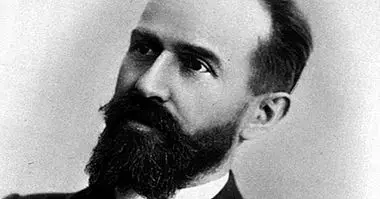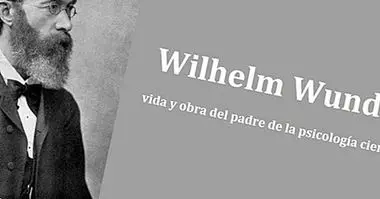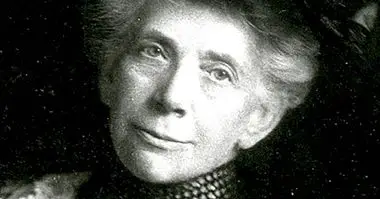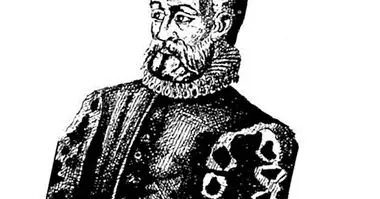Jerome Bruner: biography of the impeller of the cognitive revolution

Jerome Seymour Bruner (United States, 1915 - 2016) is one of the psychologists who have most influenced the development of psychology in the twentieth century, and it is for a good reason. After receiving his doctorate at Harvard University in 1941, he carried out a series of works and research on perception and learning that led him to confront behaviorists, such as BF Skinner, who understood this process as a product of memorizing answers appropriate (or "useful") to certain stimuli.
When, during the 50s, Bruner acted as a driver of the cognitive revolution that would end in the creation of the Center for Cognitive Studies of Harvard and the consolidation of cognitive psychology, the crisis of the behavioral paradigm worsened and the cognitivist current began to be forged, which today is the dominant one in practically the whole world.
In addition to his contributions to cognitive psychology, Jerome Bruner has spent several decades teaching at both Harvard and Oxford, retiring from teaching at the age of 90.
The three learning models of Jerome Bruner
Like many other researchers dedicated to cognitive psychology, Jerome Bruner spent a lot of time studying the way we learn during our first years of life . This led him to develop a theory about three basic ways of representing reality that, at the same time, are three ways of learning based on our experiences. Its about enactive model, the iconic model and the symbolic model.
According to Bruner, these models or modes of learning are presented in a staggered way, one behind the other following an order that goes from the most physical and related to the immediately accessible to the symbolic and abstract. It is a theory of learning very inspired by the work of Jean Piaget and his proposals about the stages of cognitive development.
The similarities between the ideas of Jerome Bruner and those of Piaget do not end there, since in both theories learning is understood as a process in which the consolidation of certain learning allows that then you can learn things that could not be understood before.
1. Enactive model
The enactive model proposed by Bruner is the learning mode that appears first, since It is based on something we do from the first days of life: physical action , in the broader meaning of the term. In this, the interaction with the environment serves as a basis for the acting representation, that is, the processing of information about what we have close to us that reaches us through the senses.
Thus, in the enactive model of Jerome Bruner, learning is done through imitation, manipulation of objects, dance and acting, etc. It is a learning mode comparable to Piaget's sensorimotor stage. Once certain learning has been consolidated through this mode, the iconic model appears .
2. Iconic model
The iconic mode of learning is based on the use of drawings and images in general that can be used to provide information about something beyond themselves. Examples of learning based on the iconic model are the memorization of countries and capitals observing a map, the memorization of different animal species seeing photographs, or drawings or films, etc.
For Jerome Bruner, the iconic way of learning represents the transition from the concrete to the abstract , and therefore presents characteristics that belong to these two dimensions.
3. Symbolic model
The symbolic model is based on the use of language, whether spoken or written . Since language is the most complex symbolic system that exists, it is through this learning model that we access the contents and processes related to the abstract.
Although the symbolic model is the last to appear, Jerome Bruner stresses that the other two continue to occur when you learn in this way , although they have lost much of their prominence. For example, to learn the movement patterns of a dance we will have to resort to the enactive mode regardless of our age, and the same will happen if we want to memorize the parts of the human brain.
The learning according to Jerome Bruner
Beyond the existence of these modes of learning, Bruner has also held a particular vision on what learning in general is. Unlike the traditional conception of what learning is, which equates it with the almost literal memorization of contents that are "stored" in the minds of students and learners, Jerome Bruner understands learning as a process in which the learner has an active role .
Starting from a constructivist approach, Jerome Bruner understands that the source of learning is intrinsic motivation, curiosity and, in general, everything that generates interest in the learner.
Thus, for Jerome Bruner learning not so much the result of a series of actions as a continuous process that is based on the way in which the individual classifies the new information that comes to create a meaningful whole. The success that is had when grouping pieces of knowledge and classifying them in an efficient way will determine if the learning is consolidated and serves as a springboard to other types of learning or not.
The role of teachers and tutors
Although Jerome Bruner pointed out that the apprentice has an active role in learning, He put a lot of emphasis on the social context and, specifically, on the role of those who supervise this learning . Bruner, like Vygotsky did, argues that it is not learned individually but within a social context, that leads to the conclusion that there is no learning without the help of others, whether teachers, parents, friends with more experience , etc.
The role of these facilitators is that of act as guarantors of a guided discovery whose engine is the curiosity of the apprentices . In other words, they must put into play all the means for the apprentice to develop their interests and obtain practice and knowledge in return. This is the basic idea of scaffolding.
It is therefore not surprising that, like other educational psychologists such as John Dewey, Bruner proposed that schools should be places that give vent to the natural curiosity of students, offering them ways of learning through inquiry and the possibility of developing their interests thanks to the participation of third parties that guide and act as referents.
The spiral curriculum
Jerome Bruner's research has led him to propose a spiral educational curriculum , in which the contents are reviewed periodically so that each time the contents already learned are reconsolidated in the light of the new information available.
Bruner's spiral curriculum graphically depicts what he understands as learning: the constant reformulation of what has been internalized to make it richer and more nuanced as several experiences are experienced.

